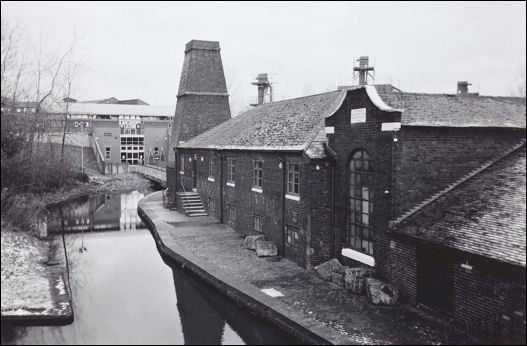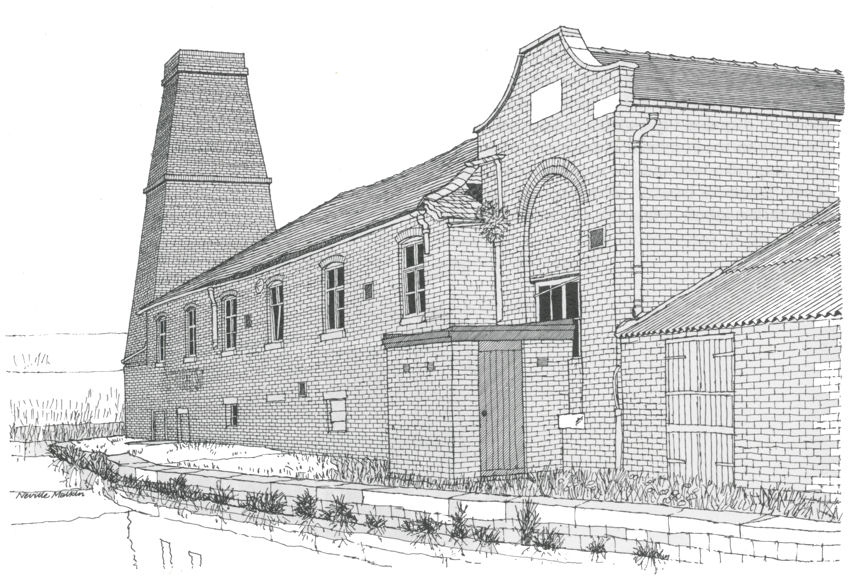photo: Steve Birks - 2001
Former Bone Mill. 1857.
Brick with Welsh slate roofs. Complete range of
buildings including calcining kiln, bone crushing workshops and
engine house.
Calcining kiln to the left, a square section base
tapering to cap, adjoining the main workshop range of 2 storeys,
with 6 upper windows (one now a door approached up 20th Century
steps) with lower windows and door now partly below ground
level. Engine house adjoins to the right, with pedimented gables
and full hight round arched window.
Inscribed stone in apex reads: "Etruscan Bone
Mill 1857 Jesse Shirley". Single storeyed workshop with tiled
roof adjoins to the right, and set back behind the engine house,
a tall square section chimney.
Inside, all the working equipment survives,
restored as a working museum.

Etruria
Industrial Museum, Lower Bedford Street, Etruria.
Today run as an
industrial museum by Stoke-on-Trent City Council, Jesse
Shirley’s Flint and Bone
Mill was
built in 1857, alongside the Trent and Mersey Canal. The site
includes a flint kiln, working steam engine and grinding pans
that had remained in production until 1972.
Jesse Shirley was
born in Etruria on 17 November
1848. He
was educated at Alfieri's Academy,
Northwood,
Hanley, and was in
partnership with
his brother, H. B. Shirley
in the firm
of Jesse and H. B. Shirley,
bone and
flint mills, Etruria.
The company started in 1820 and still operates today and is the
world's oldest producer of calcined bone ash use in the
manufacture of fine bone chine pottery.
In 1837 Jesse
Shirley started to supply calcined bone ash to Josiah Wedgwood
and Sons Limited. This enabled Jesse Shirley to prosper in
Etruria, near to the renowned factory of Josiah Wedgwood.
![]()

![]()
